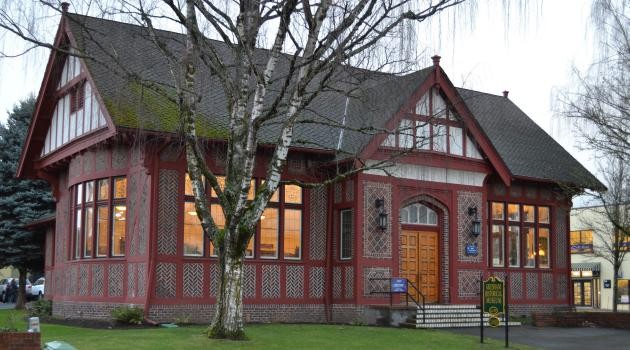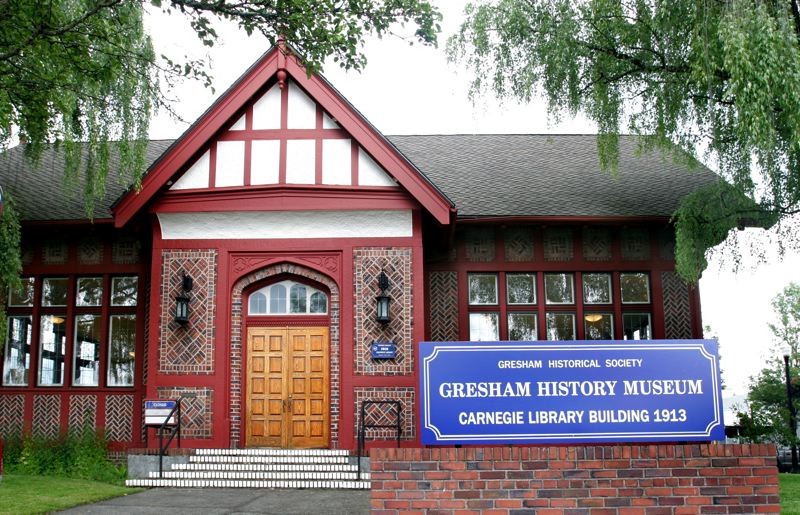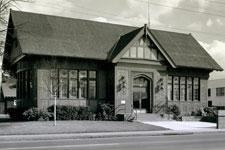Gresham Carnegie Library
Introduction
Text-to-speech Audio
Images



Backstory and Context
Text-to-speech Audio
Andrew Carnegie, the Scottish immigrant who later became a leading United States steel industrialist and philanthropist, financed one-thousand-six-hundred-seventy-nine public library buildings in over one thousand American communities, towns, and cities between 1886 and 1925. Carnegie was an international celebrity, who chose libraries as his primary target for his philanthropy. Eventually, Carnegie would donate fifty-six-million dollars to over two-thousand-five-hundred library buildings throughout the English-speaking world, with forty million dollars going towards United States libraries. Carnegie was born in Dunfermline, Scotland and moved with his family to the United States in 1848 and settled in Allegheny, Pennsylvania. In 1865, he established his own business enterprises and eventually organized the Carnegie Steel Company. His company became rather successful and soon Pittsburgh became America’s center for steel production.
At the age of sixty-five, Carnegie sold his company to J. P. Morgan for four-hundred-million-dollars. For the remainder of his life, Carnegie became a philanthropist and writer. From 1889 until his death in 1919, Carnegie, a self-made millionaire, gave away three-hundred-fifty-dollars of his wealth for the betterment of adult education, education in the fine arts, and improvement of public libraries. One of Carnegie’s lifelong interests was the establishment of free public libraries to make available to everyone a means of self-education. In 1881, Carnegie developed through his corporation a program of grants for the construction of one-thousand-six-hundred-eighty-one public libraries in the United States from 1889 to 1923.
For a community to receive grant money for a public library building, Carnegie attached two stipulations. The first condition was that the local community had to provide a suitable site for the library and formally agree to continuously support the library through tax funds. Around 1911, the Secretary of the Carnegie Foundations, James Bertram, met with leading authorities on library management and design to produce guidelines for communities to follow when designing their libraries.
As many as thirty-two buildings were opened in twenty-five Oregon communities, typically county seats, as a result of Andrew Carnegie’s library philanthropy between 1906 and 1921. Seven of those buildings were branch libraries in the Portland metropolitan area. From 1911 to 1921, the Carnegie Foundation granted funds for the construction of libraries in the Multnomah County communities of East Portland, Albina, Gresham, St. Johns, Arleta, and South Portland. The Gresham City Library, established in 1903, was housed in various buildings within the city until 1913 when this building was completed. The site was purchased for $1,900 and Carnegie funds were obtained to pay for the construction of a building, which was $11,568.
The Gresham Carnegie Library was designed by architect Folgar Johnson. The building has been acclaimed as one of the finest examples of Tudor architecture and is considered outstanding in beauty. Marion D. Ross, professor of History of Architecture, at the University of Oregon, has cited this library as being one of the best examples of this form in the area. The decorative arrangement of bricks in the exterior walls is unique and added to the décor of the building are the famous colophon windows which are made of glass and lead.
Today, the structure houses the Gresham Historical Society, as noted by a wooden sign which hangs in front of the building which reads, “Gresham Pioneer Museum – Carnegie Library Building 1913 Gresham Historical Society”.
Sources
Gresham Carnegie Library, National Register of Historic Places. Accessed January 12th 2021. https://catalog.archives.gov/id/77850877.
Gresham Historical Society. Accessed January 12th 2021. http://www.greshamhistoricalsociety.org/.
